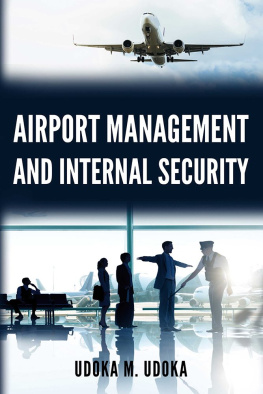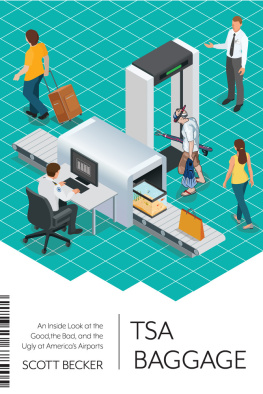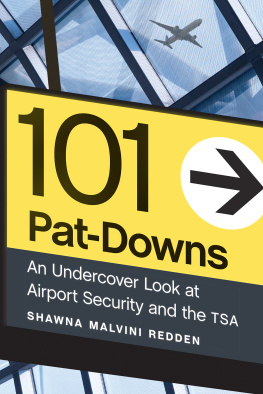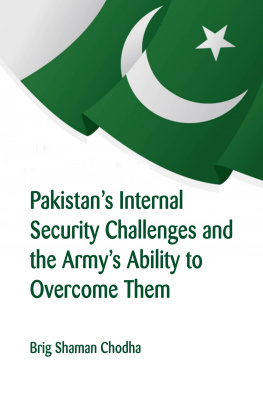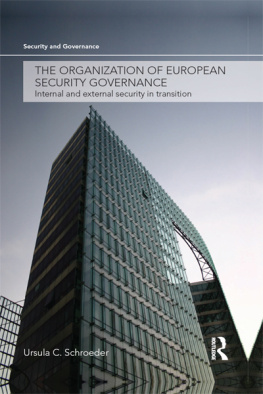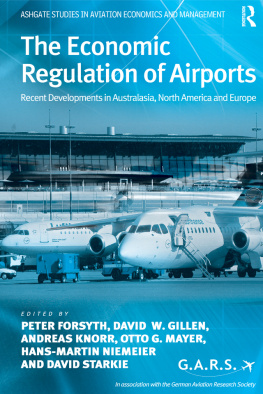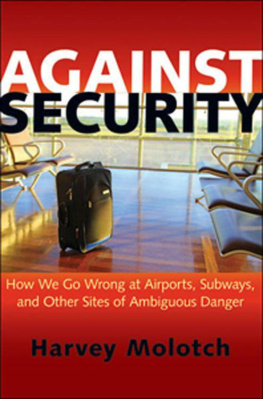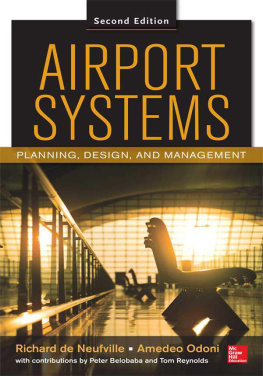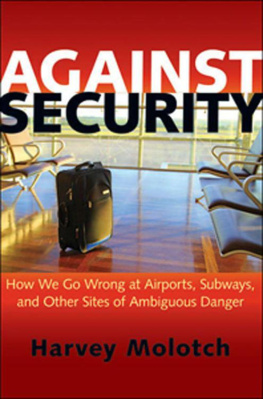Airport Management and Internal Security
2021, Udoka M. Udoka
All rights reserved. This book or any portion thereof may not be reproduced or used in any manner whatsoever without the express written permission of the publisher except for the use of brief quotations in a book review.
ISBN: 978-1-09836-4-403
ISBN eBook: 978-1-09836-4-410
DEDICATION
I dedicate this work to the Almighty God for the grace, infinite wisdom and favour granted to me in the course of undertaking this work. I ascribe to Him the glory, honour and adoration due His name, Amen
The study provided valuable roadmap to implementing the recommendations for improved airport management and internal security.
Contents
EXAMPLE OF AIRPORT MANAGEMENT AND INTERNAL
SECURITY IN THE UNITED STATES OF AMERICA
OVERVIEW OF AIRPORT MANAGEMENT AND
INTERNAL SECURITY
CHALLENGES MILITATING AGAINST AIRPORT MANAGEMET
FOR ENHANCED INTERNAL SECURITY
PROSPECTS OF AIRPORT MANAGEMENT AND
INTERNAL SECURITY
ABBREVIATIONS AND ACRONYMS
ABBREVIATIONS
WW | - World War |
CDRE | - Commodore |
ACRONYMS
UK | - United Kingdom |
ICAO | - International Civil Aviation Organisation |
FAA | - Federal Airport Authority |
SA | - South Africa |
ATNS | - Air Traffic Navigation Services |
SANDF | - South Africa National Defence Force |
NCAA | - Nigerian Civil Aviation Authority |
FG | - Federal Government |
NSA | - National Security Adviser |
AMA | - Airspace Management Agency |
SARPs | - Standard and Recommended Procedures |
MMIA | - Murtala Mohammed International Airport |
MD | - Managing Director |
USA | - United States of America |
DG | - Director General |
FAA | - Federal Aviation Authority |
CAP | - Civil Aviation Policy |
CCTV | - Close Circuit Television |
AVSEC | - Aviation Security |
IED | - Improvised Explosive Device |
VIED | - Vehicle Borne Improvised Explosive Device |
AHCO | - Aviation Haulage Company |
GAT | - General Aviation Terminal |
MET | - Meteorology |
CAT | - Civil Aviation Technology |
AIB | - Accident Investigation Bureau |
IGR | - Internal Generated Revenue |
SME | - Small and Medium Enterprise |
ICT | - Information Computer Technology |
NIMC | - National Identity Management Commission |
e-ID | - Electronic Identity Card |
ICA | - Infrastructure Concession Agency |
BOT | - Build, Operate and Transfer |
ASF | - Airport Security Force |
ONSA | - Office National security Adviser |
NSA | - National Security Adviser |
NASS | - National Assembly |
GDP | - Gross Domestic Product |
CHAPTER 1
INTRODUCTION
BACKGROUND TO THE STUDY
One of the fundamental objectives of governments worldwide is the ability to effectively manage and control their territories by land, sea and air. The invention of the aircraft by the Wright Brothers in 1903 compounded the complexities involved in the management and control of national territories. This is more so as aircraft operate from airports which need to be properly managed and protected. The success that crowned the Wright Brothers efforts on 17 December 1903 was the invention of a fully controlled self-powered, heavier-than-air machine, which was the first remarkable attempt by man to fly. Subsequently, technological developments led to rapid growth in the development of aircraft, aerodrome, aviation infrastructure, and management of these assets became imperative.
The development of these assets gave birth to present day airport management and its economic benefits for enhanced internal security. Airport management simply refers to the processes involved in ensuring active planning, coordinating, maintaining, staffing, controlling and managing all airport activities to ensure socio-economic wellbeing, safe and efficient air operations for enhanced internal security. Internal security entails the effective control, management and protection of nations borders. It also involves the protection of countrys key and vital assets, economic, political, cultural and military strategies that would promote, preserve and maintain the interest of a nation including its citizens.
Globally, the effective management of airport activities in recent times has provided a viable strategy for internal security. As civil and military airport operations grew rapidly after the First World War (WW1), with aircraft flying across international boundaries under different rules and regulations, the problem of airport management and its attendant security challenges became prevalent. These security challenges are referred to as accidental/malicious damage, crime, terrorism, and other security threats while methods or techniques used in an effort to protect passengers, staff, aircraft, and airport infrastructure from accidental/malicious harm, crime, terrorism, and other threats is known as airport security. The increase in air transportation necessitated the need to establish relevant bodies to coordinate the management of flights operations at the airports and ensure safety of passengers. The United Kingdom (UK), Hungary, Germany and France established regulating agencies to coordinate civil aviation requirements. An International Civil Aviation Organization (ICAO) conference was held in 1944 to harmonize the management of civil/military aircraft operations and its attendant safety and security demands.
Since its inception at Chicago Conference in 1944, the ICAO Convention, also known as Chicago Convention has been accepted by189 countries. This is to ensure smooth management and efficient linkages among countries operating on international flight routes for enhanced internal security. The problem of providing efficient linkages between nations/countries airports to ensure safe and efficient air operations is the responsibility of airport management.
In the United kingdom (UK), airport management is one of the most dynamic and rewarding sector in aviation industry in the country. The UK airport management is considered a top priority in its internal security policies since after 9/11 attacks. The UK government has taken pre-emptive measures to ensure that the countries airport management set-up is provided with conducive environment to carry out its statutory roles. This is evidenced in the scrutiny and vetting of passengers and security control checks among others at the airports for enhanced airport management and internal security in the UK.

